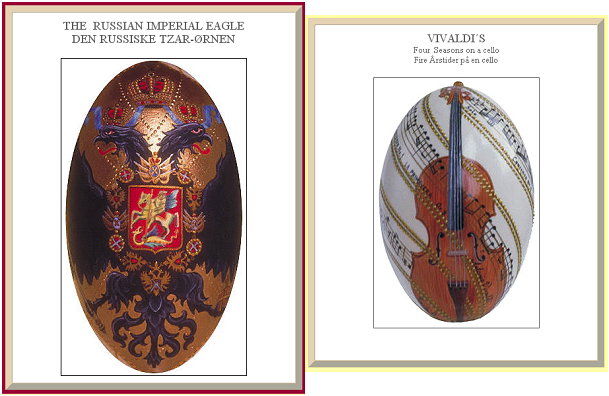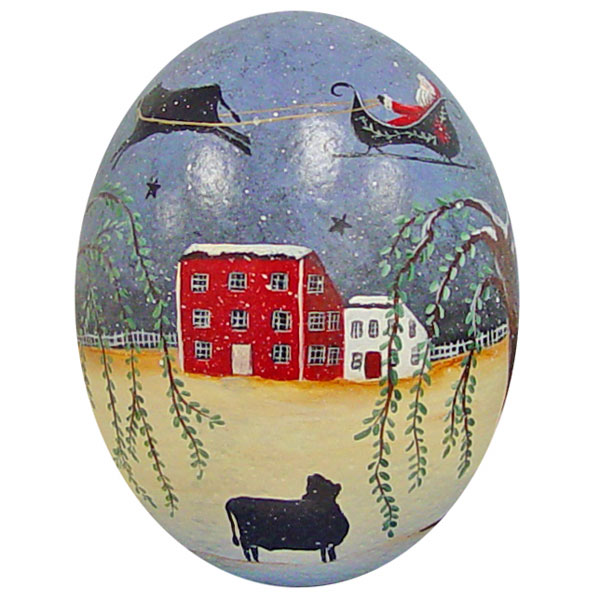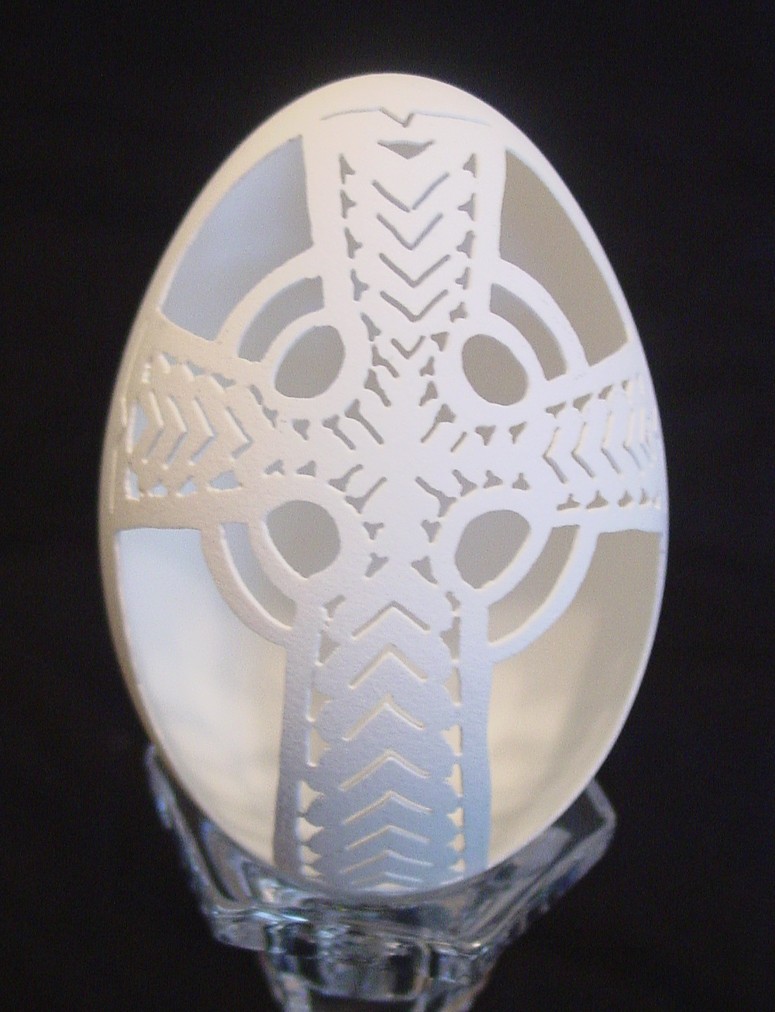E
EGGSHELLS(Fr-oeuf coquille; Ger-Eierschale; Nor-eggeskall; Rus- яйцо раковина -?)
A. Eggshell. Ostrich (Struthio
camelus Linnaeus, 1758) eggshell
(height ~15 cm), hand painted by Josef Zlomek of Prague, Czech
Republic. (© photo
courtesy of Josef Zlomek, from zlomek.jikos.cz/
eggs.php?lang=en)

B. Eggshells. Goose (Anser anser (Linnaeus, 1758)) eggshells: Left, “The Russian Imperial Eagle” (height ~9 cm) “a very special one ... much slimmer and higher than any other I have seen.” Randi Andreassen (personal communication, 2006). Right, “Vivaldi's ‘Four Seasons on a cello’” (height ~7 cm). Artist: Randi Andreassen of Oslo, Norway. (© photo courtesy Randi Andreassen, http://www.radesign.com)

B. Eggshells. Goose (Anser anser (Linnaeus, 1758)) eggshells: Left, “The Russian Imperial Eagle” (height ~9 cm) “a very special one ... much slimmer and higher than any other I have seen.” Randi Andreassen (personal communication, 2006). Right, “Vivaldi's ‘Four Seasons on a cello’” (height ~7 cm). Artist: Randi Andreassen of Oslo, Norway. (© photo courtesy Randi Andreassen, http://www.radesign.com)

